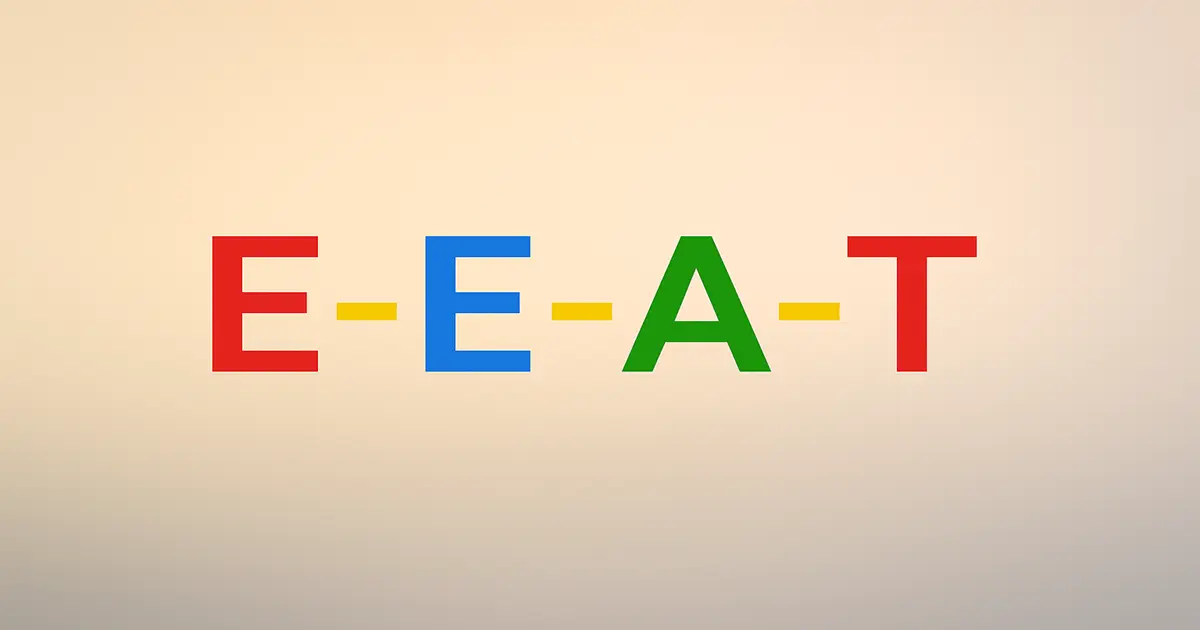Introduction
In the constantly changing landscape of SEO, it’s important to keep up with Google’s ranking signals. The days of keyword stuffing and backlinks are over; Google puts enormous emphasis on quality content, user experience, and above all, E-E-A-T.
If you’re a digital marketer, content creator, or business owner wondering why your blog isn’t ranking despite great effort, this might be the missing piece. Credibility stands for Experience, Expertise, Authoritativeness, and Trustworthiness. It’s not just a buzzword—it’s a vital component of Google’s Search Quality Evaluator Guidelines.
This blog reveals the strong secrets of Credibility and how using it can win Google’s trust, boost your website’s authority, and rank higher. From what it is, why it’s important, its primary advantages, actual case studies, to how you can use E-E-A-T powerfully—you’ll learn it all.
By the time you’ve finished reading this post, you’ll have all you need to improve your online presence, drive quality traffic, and SEO-proof your strategy with Credibility. Let’s start!
What is E-E-A-T?
E-E-A-T is an abbreviation that Google employs to gauge content and site quality. It appeared in its Search Quality Evaluator Guidelines and is applied to determine if content is helpful and reliable for users. Break it down:
- Experience: This is about firsthand experience. If you are writing a product review, did you use the product? Google prefers content created by individuals with firsthand knowledge of the topic.
- Expertise: Are you the expert on the subject you’re writing about? This is not always a matter of formal education, but it is a matter of having deep knowledge that shows up in the content.
- Authoritativeness: This is about your reputation. Are people in your field quoting you? Do you have a robust online presence within your space? Google looks for credentials, backlinks from credible places, and mentions.
- Trustworthiness: Perhaps the most important aspect. Can users trust your content, site, and business? Google seeks secure sites (HTTPS), clear information (contact information, author profiles), and accurate content.
Google uses Credibility to guarantee that the information it delivers in its search results is dependable, especially for issues that affect health, money, and well-being, typically known as YMYL (Your Money or Your Life) issues.
While Credibility isn’t a direct ranking factor, such as keywords or mobile-friendliness, it significantly impacts your SEO performance indirectly. Content that lacks Credibility may struggle to gain visibility regardless of its on-page SEO tactics.
Why E-E-A-T Matters
In a digital world flooded with misinformation, Google’s mission is to serve content that users can trust. That’s where Credibility becomes crucial.
- Search Engine Credibility: E-E-A-T reflected in your content. This will increase your chances of Google ranking it higher. This is particularly crucial for niches such as health, finance, and legal consultancies.
- Content Quality Assurance: The fact that the content has been produced with responsibility and care is what Credibility conveys. It tells consumers that the content is not clickbait nor AI-fluff. Both the search engine and consumers take notice.
- Increased User Trust: Users who come to your page and notice evidence of expertise and trust, such as credentials, citations, reviews, or secure browsing, are more likely to engage for longer, lowering bounce rates.
- Competitive Advantage: Whereas most do technical SEO alone, those who incorporate Credibility excel with greater domain authority and long-term ranking.
- Algorithm Updates Ready: Whenever there is a Google core update, sites that do not have Credibility tend to experience drops. Incorporating Credibility makes your content immune to these fluctuations.
In short, E-E-A-T closes the content visibility-content credibility gap. In current competitive SEO times, adding Credibility is not only a strategy—it is a necessity.
Benefits of E-E-A-T
Applying E-E-A-T to your content marketing and SEO initiatives has broad benefits:
Improved Google Rankings
Content with robust E-E-A-T signals performs well in SERPs. Google has confidence in authoritative sources and rewards them with exposure.
Better User Experience
When consumers see comprehensive, trustworthy, and well-structured content, they are likely to engage, share, and revisit.
Brand Credibility
E-E-A-T creates a reputable reputation for your brand. Author bios, customer reviews, and expert quotes build you as an authority within your niche.
More Organic Traffic
Better trust and higher rankings mean more clicks and longer sessions, which further improve SEO.
Better Conversion Rates
When individuals trust your content, they will be more likely to convert, be it subscribing to a newsletter, completing a form, or even making a purchase.
Future-Proof SEO
E-E-A-T joins Google’s vision for content quality and user-first algorithms. It safeguards your rankings through core updates and algorithm changes.
Authority Link Building
Whenever you are regarded as a reliable source by others, you automatically gain backlinks—one of the strongest ranking factors.
Case Studies
Let’s see how websites and brands have been able to use E-E-A-T successfully:
1. Healthline
Healthline is a prominent health information website that has medical professionals reviewing each article. Author bios, peer-reviewed journal citations, and updates on the latest research enhance their Credibility. Healthline always ranks in the top 3 for health-related searches.
2. NerdWallet
In the financial advisory realm, NerdWallet excels through open author credentials, explicit disclosures, and rich, experience-based reviews. Their writing is reliable and well-sourced—exemplary cases of high Credibility.
3. Backlinko by Brian Dean
Backlinko gained authority in the SEO realm by creating thoroughly researched, authoritative content. Brian Dean’s experience and regular output of data-driven approaches made his blog authoritative.
4. WebMD
While akin to Healthline, trust signals on WebMD are fueled by massive medical editorial boards, certifications, and legal statements. Their emphasis on Credibility translates to high domain authority.
These companies not only own SERPs but also have long-term user trust, demonstrating that Credibility isn’t reserved for large businesses—it’s scalable on any level.
How to Use or Implement E-E-A-T
Here’s how to implement the Credibility step by step:
1. Develop High-Quality, Experience-Based Content
Use personal anecdotes, firsthand usage findings, and extensive research. This proves your expertise and experience to Google and users alike.
2. Show Author Information
Add in-depth author bios with qualifications, social proof, and industry credentials to demonstrate expertise and authority.
3. Acquire Backlinks from Trusted Sources
Get referenced by or partner with credible websites and influencers in your niche. These backlinks increase your authority and trustworthiness.
4. Employ Clear Editorial Policies
Publish open guidelines on how content is prepared, reviewed, and updated. This establishes trust with your users.
5. Add Reviews and Testimonials
Display authentic customer reviews, testimonials, or third-party ratings. This not only provides social proof but also indicates experience and credibility.
6. Secure Your Site (HTTPS)
Always employ SSL certificates to secure user data. A secure website is an elementary but vital trust signal.
7. Stay Up-to-Date
Stale information harms trust. Refresh your content regularly, especially for time-sensitive topics like health or finance.
8. Utilize Structured Data (Schema Markup)
Make Google understand your content better. Apply structured data to reviews, author information, FAQs, and others.
Conclusion
E-E-A-T is not a fleeting fad—it’s the core of how Google determines quality content. With increasingly advanced search engines, the need for authentic, skilled, and authoritative content will only grow.
By incorporating Credibility principles, you can establish credibility, differentiate yourself from the competition, and protect your site from algorithm updates. You may be a lone blogger or running a corporate website, but keeping Experience, Expertise, Authoritativeness, and Trustworthiness top of mind is your ticket to long-term SEO success.
Don’t make Credibility an afterthought. Let it be the core of your content strategy and see your rankings—and your reputation—take off.
FAQs
Q1: Is E-E-A-T a ranking factor?
Although E-E-A-T is not a direct ranking signal like mobile-friendliness, it greatly impacts Google’s evaluation of content quality and trust, indirectly affecting your rankings.
Q2: How do I demonstrate experience in my blog?
Personal anecdotes, real-world examples, product usage, or customer case studies. Google wants to be able to see that the author has firsthand experience.
Q3: Does E-E-A-T apply to small websites?
Yes. Small blogs, too, can exhibit E-E-A-T through the presentation of expertise, transparency in authorship, linking to authoritative sources, and the acquisition of credible backlinks.
Q4: Does Credibility only apply to health or finance content?
No, although it’s essential for YMYL content, all sites stand to gain from adopting Credibility since Google prizes content that is authoritative and reliable across all sectors.
Q5: How frequently should I refresh content for E-E-A-T?
Update quarterly or whenever there is new information available. New content indicates relevance and trustworthiness.










